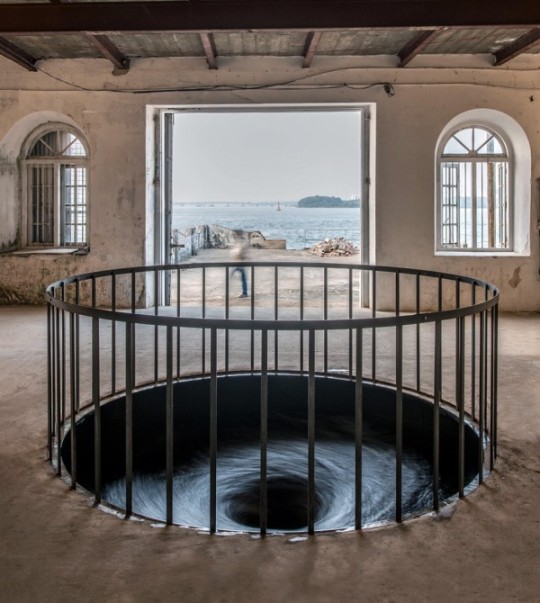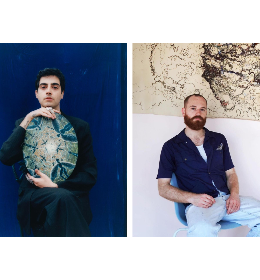
Descension (2014). Photo by Dheeraj Thakur, courtesy of the Kochi Biennale Foundation
In 2010-2011, your work was exhibited in two exceptional settings: at the NGMA in New Delhi and at the Mehboob Studios of Mumbai. But it was not until your invitation to the Kochi Biennale that a design in situ could be created in India, for the people of India, for the visitors of the Biennale and for Indian engineers of the region.
Yes, it is true that it has taken time. Jitish Kallat invited me to take part, and naturally, I accepted straight away. I remember all of these places from my childhood, it has certainly changed with the country’s evolution, but I have returned with the wish to make it known that here, art is a serious thing. And that public art is also art in itself!
The people of India have a great artistic and philosophical tradition, but they do not believe in their contemporaries. They are exceedingly wary of the contemporary art scene. It has taken a long time to see such an event evolve and gain recognition. It is notably the role of the government to finance a biennale and that is the issue everyone is tackling, because although public money is always needed, the State must get involved.
The biennale effectively fulfils an astonishing role. The first visitors came from Kerala, and now the audience comes from far and wide. The Biennale should encourage a level of reflection on the past, present and future…. We must believe in art, it’s the centre of everything! There is a truth to be recognised, and that is knowing when to take risks. For me, art is consciousness, it’s the mythological response to life, and we must believe in the mythological process of art. In fact, I was not sure that this piece would work, and yet it does…
Tell us more about this piece that you are exhibiting at the Kochi Biennale, Descension.
The installation takes life within a historical monument on the highly symbolic site of Aspinwall. The installation of the piece was fun and games; the pillars of the temple had to be moved so that a circular hole could be dug, placing a motor which feeds the design with water where the river and the ocean meet. Entrepreneurs, artisans and other local forces came together so that this breathtaking whirlpool, with a night-blue pigment, could be brought to life before us today. This was really not only a technical feat, but also a logistical and artistic one.
Outside of these events, how do you work?
In my London workshop, I work on human-scale sculptures, which later take on immense dimensions. Scale is essential in sculpture. All my work is based around the non-materiality of sculpture.









